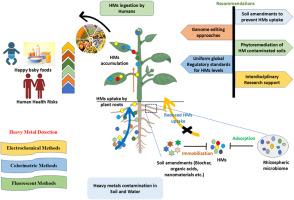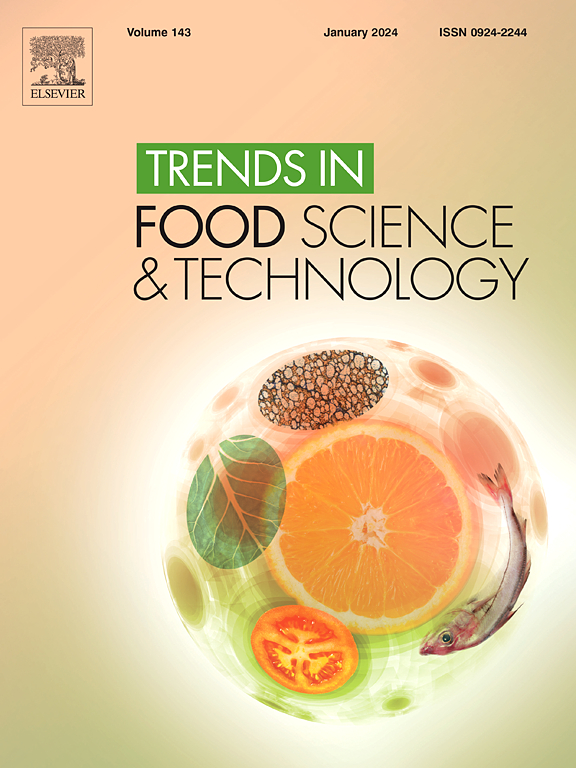减轻食品中的有毒金属污染:缩小知识差距,解决食品安全问题
IF 15.1
1区 农林科学
Q1 FOOD SCIENCE & TECHNOLOGY
引用次数: 0
摘要
背景减少接触食品中的有害物质是人们的强烈愿望,尤其是对婴幼儿和孕妇而言。本综述和研讨会的目的是增进当前有关食品安全的主要有毒金属(即砷 (As)、铅 (Pb)、镉 (Cd)、汞 (Hg) 和铬 (Cr))、预防措施、确定关键知识差距以及研究、推广和教育需求的知识。作为美国农业部、食品及药物管理局和其他联邦机构的 "接近零(C2Z)"倡议的一部分,研讨会采用了 "同一健康 "的方法来减少有害元素的膳食暴露和环境污染。为了促进食品安全,本次研讨会严格审查了有毒金属污染、从农场到餐桌再到人类的整个过程中的暴露和毒性、研究差距、现行法规和可持续补救方法,并提出了重要建议。这篇综述文章透视了研讨会在解决食品安全这一重要问题方面的主要发现,强调跨学科研究可有效调查和理解土壤生物地球化学、微生物组、植物耐受性和积累策略、食品和水中可接受和安全有毒元素含量的统一标准以及提高公众意识之间复杂而动态的关系。面对现代工业化和不断变化的气候,本文还为有关有毒金属归宿和影响的决策(包括风险管理战略)奠定了基础。本文章由计算机程序翻译,如有差异,请以英文原文为准。

Mitigating toxic metals contamination in foods: Bridging knowledge gaps for addressing food safety
Background
Reducing exposure to harmful substances in food is highly desired, especially for infants, young children, and pregnant women. A workshop focused on understanding and reducing toxic metal contamination in food was conducted involving leading scientists, educators, practitioners, and key stakeholders in conjunction with the USDA National Institute of Food and Agriculture.
Scope and approach
The goal of this review and the workshop was to advance the current knowledge of major toxic metals concerning food safety, viz. arsenic (As), lead (Pb), cadmium (Cd), mercury (Hg), and chromium (Cr), preventive measures, identify critical knowledge gaps, and the need for research, extension, and education. Being a part of the “Closer to Zero (C2Z)” initiative of the USDA, FDA, and other federal agencies, the workshop adopted a “One Health” approach to mitigate dietary exposure and environmental pollution of hazardous elements.
Key findings and conclusions
The experts discussed the accumulation of toxic metals in food crops and drinking water in relation to soil biogeochemistry, plant uptake, and multidisciplinary factors such as food processing, detection, regulatory standards, etc. To forward food safety, this workshop critically examined toxic metals contamination, exposure and toxicity along the farm-to-fork-to-human continuum, research gaps, prevailing regulations, and sustainable remediation approaches, and offered significant recommendations. This review paper provides perspective on key findings of the workshop relative to addressing this important aspect of food safety, emphasizing interdisciplinary research that can effectively investigate and understand the complex and dynamic relationships between soil biogeochemistry, the microbiome, plant tolerance and accumulation strategies, uniform standards for acceptable and safe toxic element levels in food and water, and raising public awareness. This article also provides a foundation for decision-making regarding toxic metal fate and effects, including risk management strategies, in the face of modern industrialization and a changing climate.
求助全文
通过发布文献求助,成功后即可免费获取论文全文。
去求助
来源期刊

Trends in Food Science & Technology
工程技术-食品科技
CiteScore
32.50
自引率
2.60%
发文量
322
审稿时长
37 days
期刊介绍:
Trends in Food Science & Technology is a prestigious international journal that specializes in peer-reviewed articles covering the latest advancements in technology, food science, and human nutrition. It serves as a bridge between specialized primary journals and general trade magazines, providing readable and scientifically rigorous reviews and commentaries on current research developments and their potential applications in the food industry.
Unlike traditional journals, Trends in Food Science & Technology does not publish original research papers. Instead, it focuses on critical and comprehensive reviews to offer valuable insights for professionals in the field. By bringing together cutting-edge research and industry applications, this journal plays a vital role in disseminating knowledge and facilitating advancements in the food science and technology sector.
 求助内容:
求助内容: 应助结果提醒方式:
应助结果提醒方式:


